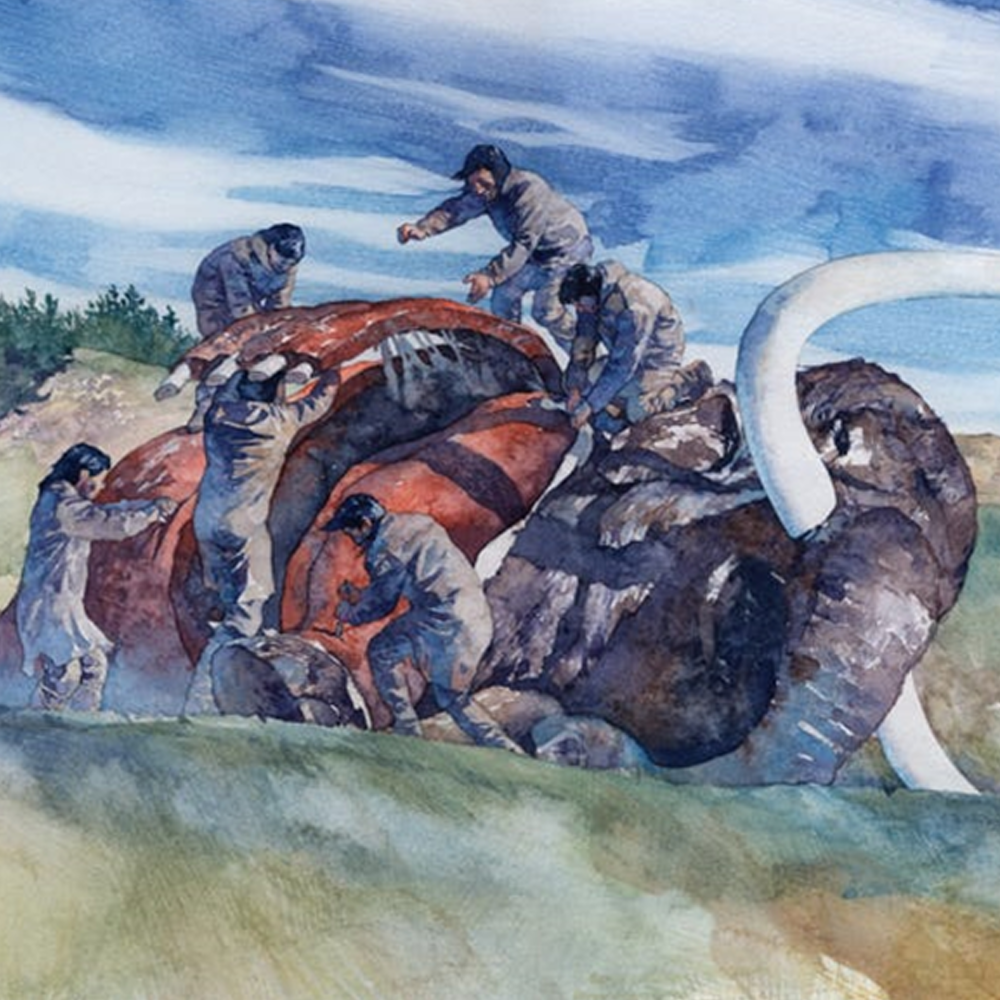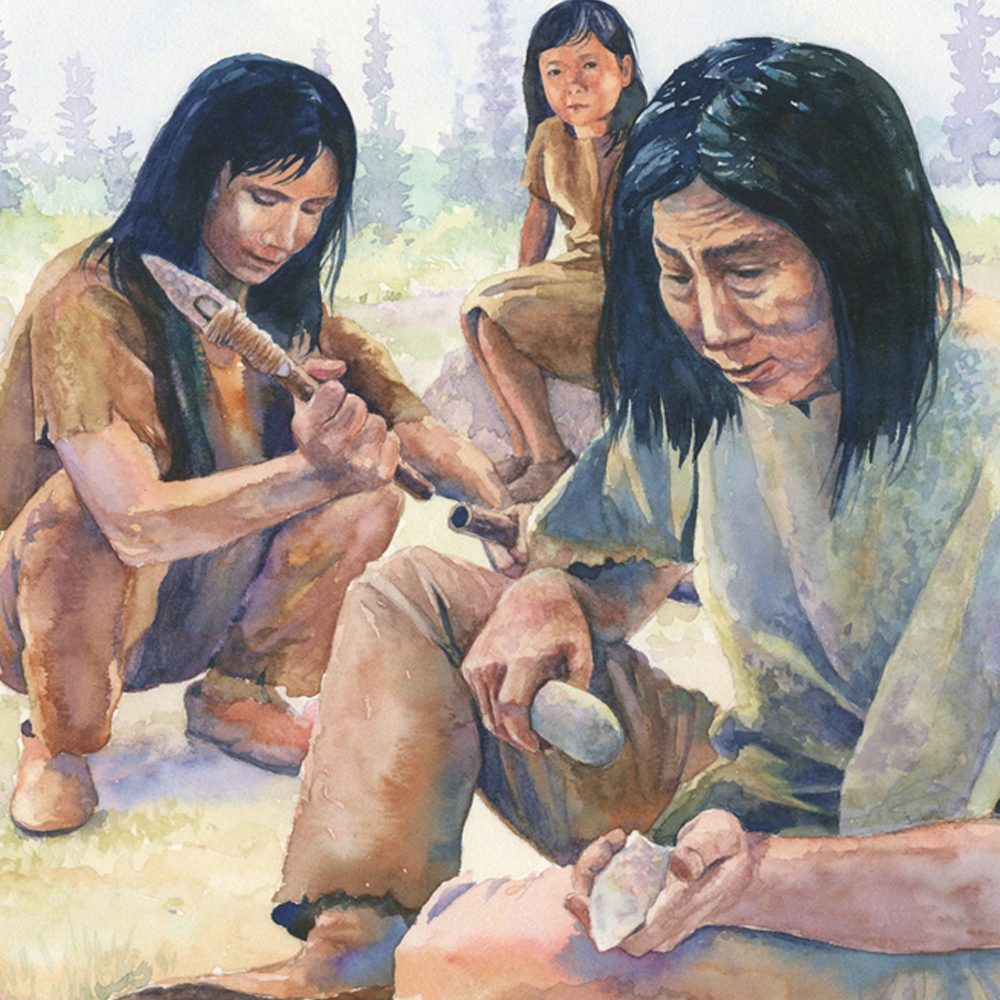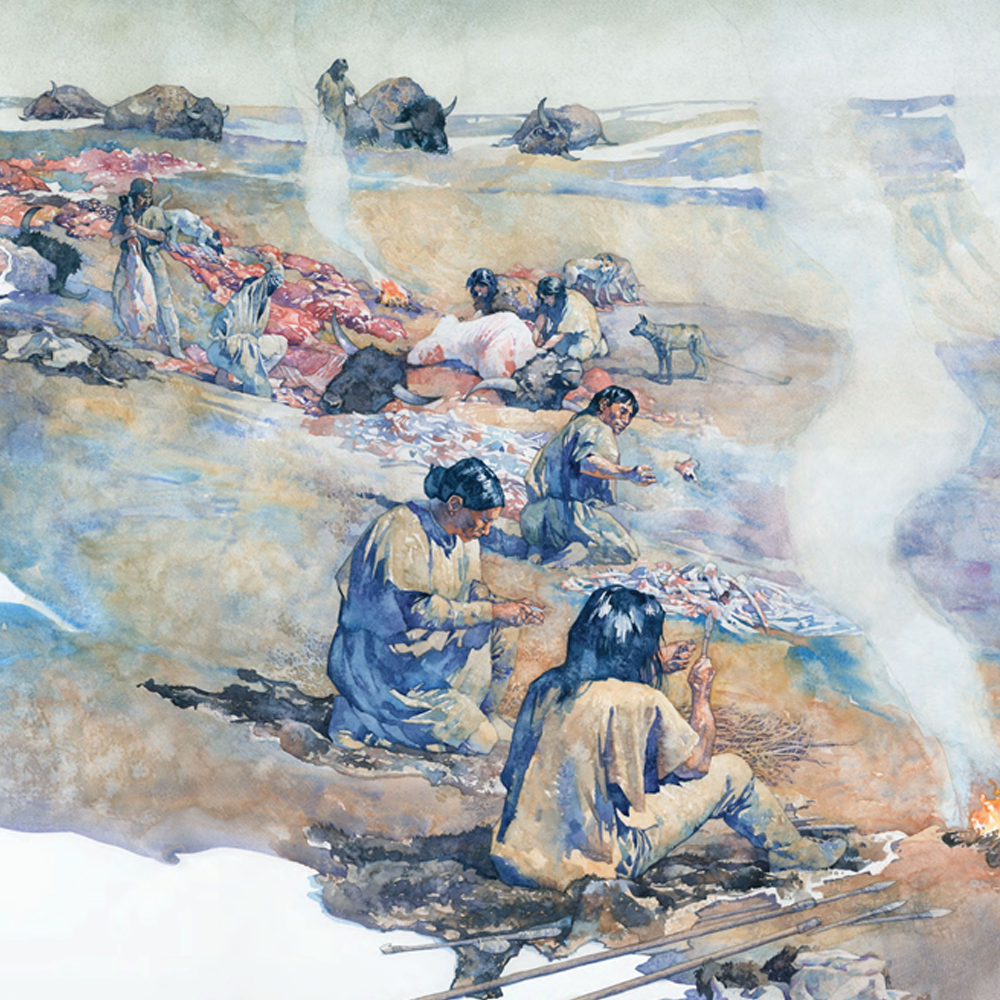Time: 2 Hours
Grades: 6-12
In this field trip, your students will journey back to the end of the Pleistocene, or the last of the Ice Ages. You'll learn all about what it was like to live as a hunter-gatherer in North America during this time period. Your students will deep dive into tools, weapons, hunting, gathering, and community life of the Paleo-Indians that lived throughout our continent.
⮜⮜ Back to On-Grounds Field Trips
More Information:
As with all of our field trips, this program can be taught as a Virtual Field Trip or as an On-Grounds Field Trip. Your students will begin with a discussion about the late Pleistocene, and what the Earth looked like during this time period. They'll learn all about where this time fits in the timeline of the world and in the timeline of human existence.
We'll then move into North America, talking about the habitat and climate of North America during the last Ice Age and how glaciers blocked migration into the continent. Your students will learn all about the two major theories of human migration into North America - the Ice Free Corridor Theory and the Kelp Highway Theory. They'll also learn a little about the animals that roamed the continent when humans first got here.
Afterwards, we'll take a deep look at what it was like to be an Ice Age Hunter-Gatherer. We'll discuss what animals were hunted, and what tools/techniques early humans used to hunt. We'll learn about what food was gathered, and how they prepared it. We'll also examine clothing, shelters, weapons, tools, and communities.
Throughout the program, we'll also learn about the science of Archaeology. We'll ask the question "How do we know?" multiple times as we learn - examining the evidence of these educational theories. We'll also see some of the most amazing artifacts and biofacts used in any of our education programs. Your students will see a real Paleo-Indian hearth from the Ice Age, a real Pleistocene groundstone, a real mammoth tibia, a real Ice Age bison tibia, skulls, pelts, and many real Ice Age tools and points.
This program was created by a University of Wyoming Archaeology student Hannah Nelson. It was created in conjunction with the UW Department of Archaeology and the Wyoming State Archaeologist. The paleoart was created by Gregory Harlin. The Wyoming State Museum thanks these people for their massive contribution to putting this amazing program together.




